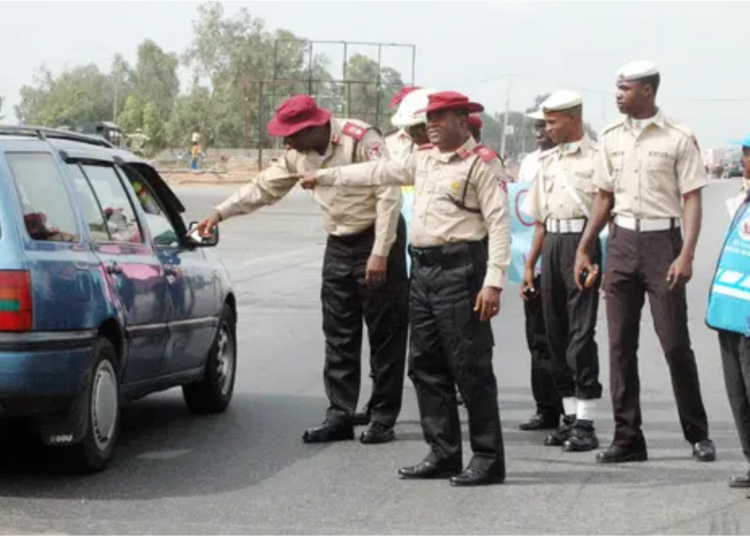Speed we know is a killer. Excessive speed kills more. If you do not agree, please read through the several annual submissions of the World Health Organisation and the World Bank and revert. I am talking about the annual World report on road traffic injury prevention .The report is a major report jointly issued by the WHO and the World Bank. It highlights the global concern that rod traffic crashes are impairing global public health and growth. The report contends that road traffic injury is unnecessary and avoidable.
What the report implies is that the recent Lagos train/BRT bus crash that killed some was avoidable. The same was the case for the crash that occurred on September 18, 2022 killing 19people all burnt beyond recognition. We can say the same for the crash I told you about that wiped a family of ten .In all these and other crashes that have killed one or more lives, excessive speed defined as speeding above the approved or posted speed limit on a particular road can be fingered as the reason.
Inappropriate speed on the other hand is where the driver drives within the speed limit, but not for the conditions of the road. Before I continue, please allow me bring you up to speed with specific details of the report which captures all the risks driving behaviours with excessive speed topping the list. I need to dwell more on this so you can appreciate the enormity of excessive speeding.
What I have chosen to do is to run verbatim the report so you will fully appreciate the work jointly done by WHO and the World Bank. The report notes that an increase in average speed which is my focus, is directly related both to the likelihood of a crash occurring and to the severity of the consequences of the crash. For example, every 1percent increase in mean speed, it notes, produces a 4percent increase in the fatal crash risk and a 3percent increase in the serious crash risk.
It further states that the death risk for pedestrians hit by car front rises rapidly; 4.5 times from 50 km/h to 65 km/h. In car-to-car side impacts, the fatality risk for car occupants is 85percent at 65 km/h. The next should be of utmost interest to my friends whose pastime is to drive under the influence as well as speeding at the same time.
It therefore identifies the place of those who indulge in driving under the influence of alcohol and other psychoactive substances .Driving under the influence of alcohol and any psychoactive substance or drug increases the risk of a crash that results in death or serious injuries. In the case of drink-driving, the risk of a road traffic crash starts at low levels of blood alcohol concentration (BAC) and increases significantly when the driver’s BAC is equal to 0.04 g/dl.
In the case of drug-driving, the risk of incurring a road traffic crash is increased to differing degrees depending on the psychoactive drug used. For example, the risk of a fatal crash occurring among those who have used amphetamines is about 5 times the risk of someone who hasn’t.
The report equally focuses on one of the running battle the Corps has been reengineering its strategies to curtail. I am talking about non-use of motorcycle helmets by riders popularly called okada riders in our clime. According to the report, correct helmet use can lead to a 42percent reduction in the risk of fatal injuries and a 69percent reduction in the risk of head injuries.
Seat belt usage which I focused on a couple of weeks ago is captured in the report. When I focused on seatbelt usage, I noted the significant impact we have created but observed that we are yet to translate this to include rear- seatbelt usage as well as child restraints. The report notes that wearing a seat-belt reduces the risk of death among drivers and front seat occupants by 45 – 50percent, and the risk of death and serious injuries among rear seat occupants by 25percent. The use of child restraints can lead to a 60percent reduction in deaths according to the report.
I know I have severally written on distracted driving reminding you of the many types of distractions that can lead to impaired driving. One of such distraction which the report captures is the one caused by mobile phones. Drivers using mobile phones, it says are approximately 4 times more likely to be involved in a crash than drivers not using a mobile phone.
This is because using a phone while driving slows reaction times (notably braking reaction time, but also reaction to traffic signals), and makes it difficult to keep in the correct lane, and to keep the correct following distances. Hands-free phones are not much safer than hand-held phone sets, and texting considerably increases the risk of a crash.
Other concerns such as unsafe road infrastructure are captured. The report therefore notes that the design of roads can have a considerable impact on their safety. Ideally, roads should be designed keeping in mind the safety of all road users. This would mean making sure that there are adequate facilities for pedestrians, cyclists, and motorcyclists. Measures such as footpaths, cycling lanes, safe crossing points, and other traffic calming measures can be critical to reducing the risk of injury among these road users.
Equally important is unsafe vehicles which it identified. Safe vehicles play a critical role in averting crashes and reducing the likelihood of serious injury. The report then refers to a number of UN regulations on vehicle safety that, if applied to countries’ manufacturing and production standards, would potentially save many lives. These include requiring vehicle manufacturers to meet front and side impact regulations, to include electronic stability control (to prevent over-steering) and to ensure airbags and seat-belts are fitted in all vehicles. Without these basic standards the risk of traffic injuries – both to those in the vehicle and those out of it – is considerably increased.
Delays in detecting and providing care for those involved in a road traffic crash increase the severity of injuries is a sore point captured also. Care of injuries after a crash has occurred is extremely time-sensitive: delays of minutes can make the difference between life and death. Improving post-crash care requires ensuring access to timely pre- hospital care, and improving the quality of both pre- hospital and hospital care, such as through specialist training programmes.
Inadequate law enforcement of traffic laws which is one area we need to improve upon was also highlighted. Hear them; If traffic laws on drink-driving, seat-belt wearing, speed limits, helmets, and child restraints are not enforced, they cannot bring about the expected reduction in road traffic fatalities and injuries related to specific behaviours. Thus, if traffic laws are not enforced or are perceived as not being enforced, it is likely they will not be complied with and therefore will have very little chance of influencing behaviour.
Lastly, it sums up with notes on the safe system approach: accommodating human error. The safe system approach to road safety aims ensure a safe transport system for all road users. Such an approach takes into account people’s vulnerability to serious injuries in road traffic crashes and recognizes that the system should be designed to be forgiving of human error. The cornerstones of this approach are safe roads and roadsides, safe speeds, safe vehicles, and safe road users, all of which must be addressed in order to eliminate fatal crashes and reduce serious injuries.
Having shared part of the report, I believe you now understand why I wish to conclude the piece with its rhetorical heading. Few days after the train crash, I heard the news that talked about the installation of appropriate iron bars at railway level crossing to prevent trains from running into vehicles. But what really is the best practice at railway crossings.
When I sourced for the best safety practice at railway crossings these are my findings. Like the BRT driver, many others tend to pay little or no attention at highway railway crossings simply because they drive there daily without seeing a train and so throw caution to the wind which is risky and dangerous.











